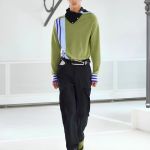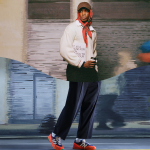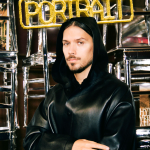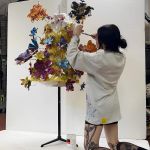

Maria Spadoni, Cristiana Satya, La Greca Kaja Cergonja
Università Iuav di Venezia
Share
Fashion Design, III year
22/21 years old
Roma/Lecce/Capo D’Istria, Italy
Schools have been among the first institutions to adapt to the new measures of quarantine. How did your school react to the state of emergency? In your opinion, what are the pros and cons of online classes?
The fact that there are lessons online is already a pro! It's very convenient, we can listen to a 4 hour theoretical lesson while we cut fabric or make patterns, and it turned out to be a great way to stay focused on both activities. It's like listening to a podcast, you boost the productivity of that time. The fact that the lessons are recorded is a huge pro, both because you can review them if you lose them, and to go over some concepts before an exam. Plus we don't have to physically move from home to college which saves us a lot of time. Our course has a very practical approach and the lack of machines, tables and staff such as tailors and modellers is very limiting in the choice of materials and in the execution of the project. Furthermore, the absence of direct contact with professors is a bit confusing, and we fashion students have a strong need to express the material dimension of our work. Some professors then, unfortunately, had to reconfigure the courses due to the way they did it, and they often had to simplify it.
The Fashion and Design Industries have been aggressively afflicted by the state of quarantine and social distancing. As a consumer, but also as a future insider of those systems, what do you think the worst consequences of this crisis will be?
Independent brands, which are the only hope for a more sustainable and less consumerist future, have suffered tremendously and it will take time for them to recover. The major brand groups, on the other hand, are not at risk of extinction, because they have a well-established system that will allow them to adapt. The loss of one or two seasons is not vital, and indeed it could question the frenetic logic of the system. Optimistically, it would bring transparency on what are the things worth producing, focusing on quality and durability, while forgetting the seasonal cycle... If something will be wearable for just one season then there is no need to produce it.
Your work is built on creativity. While we’re all in quarantine, what is your solution to keep on being creative? Where do you find your inspiration in this moment?
Creativity is the solution. Being locked down is challenging, it gives us the opportunity and time to evolve our creative methods. It forces us every day to modify our process and adapt to the materials available, and this is a huge exercise in creativity. The lack of resources is only a mental limit, but creativity knows no limits. The quarantine has interrupted the frenetic rhythms we were used to, it has forced us to stop. And it is from stasis, from immobility that the creative drive originates. We have a lifetime of collected inspirations and finally time to process them. The solution to continue to be creative is stay in the present moment and enjoy what it offers us.
















































